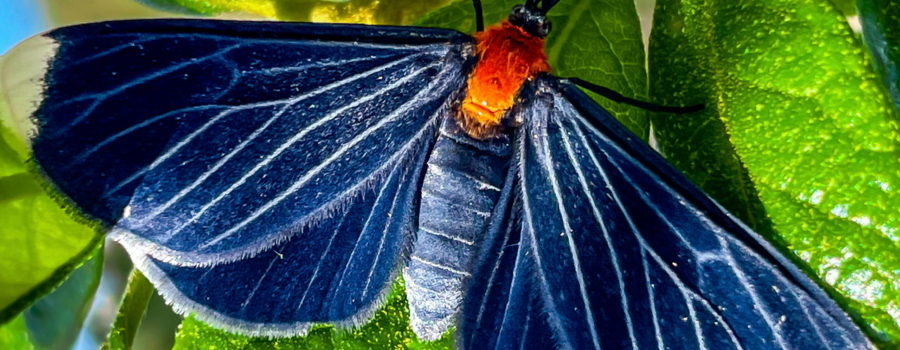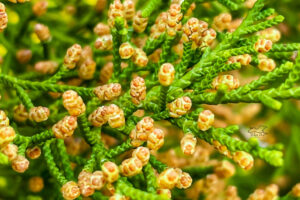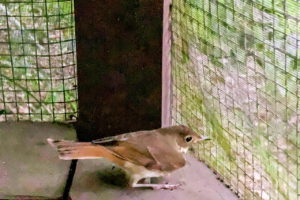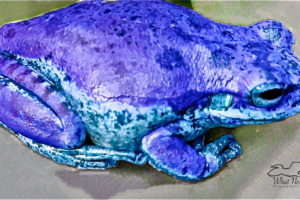The White Tipped Black is a Colorful, Day Flying Moth

Middle of last week, I was out in the dog yard at work walking a dog before surgery and I spotted a very pretty black, white, and red butterfly flitting around between some of the plants that grow out there. I tried to snap a quick photo or two but neither the butterfly nor the dog I was walking were very co-operative, and the butterfly quickly fled the yard. After work that day, as I headed out to my truck to go home, I spotted another one of the same butterflies, so I followed it around the back of our office to an oak tree. I lost sight of that individual, but I found several more in the tree and was able to take quite a few pictures. When I got home and reviewed the images, I noticed that these little ones had fluffy antennae rather than long narrow ones, so they weren’t really butterflies at all, but instead, they were moths. I had been fooled both by their bright coloration and the fact that they were active during the day! A little more research led to their identification as white tipped blacks (Melanchroia chephise). Some people may also know them as inchworm moths or duppy bush moths.

These moths are actually better known in their caterpillar form than in their adult form. The striking yellow and black caterpillars are often called snowbush worms or snowbush spanworms. They are native to Florida and the southeastern coast of Texas in the United States. They can also be found in Mexico, parts of Central America and South America, and a number of the Caribbean Islands. The adults eat nectar from a variety of plants, but the caterpillars are usually found on snowbushes. In normal years, the caterpillars don’t cause much damage to the bushes, but heavy infestations of them and/or a lack of natural predators can result in the caterpillars not only eating the leaves, but also eating branches and bark, killing the host plant. Like other moths in the family Geometridae, these caterpillars have no legs in the center part of the abdomen, so they move by stretching themselves out and them pulling the rear end up towards the head (hence the name inchworms).

Female white tipped blacks usually lay their eggs singly at the base of a leaf. Besides it’s favorite, the snowbush, the female will sometimes lay on white sapote, gooseberry, and snow-on-the-mountain. When the eggs hatch, the distinctive caterpillars are very small, but their voracious appetites allow them to grow quickly. They are usually about an inch long when they go to the ground to pupate. The pupa stay in encased in silk in the ground for about seven days before emerging as a full grown moth. In Texas the adult moths are usually on the wing between September and December, but in Florida they fly pretty much all year round.

I always enjoy finding a new species to add to my life list, but I especially like learning about interesting and unusual species like this one. I must say that I was completely fooled by this one, and although I’m not an entomologist, I did think I knew the main differences between a moth and a butterfly! Mother Nature always has a few tricks up her sleeve, and I was most definitely taken in by this one!





Recent Comments